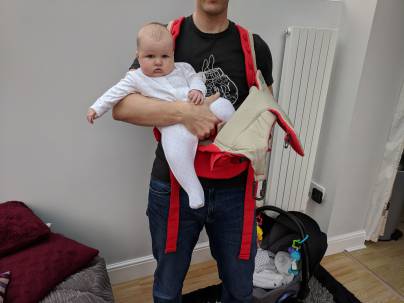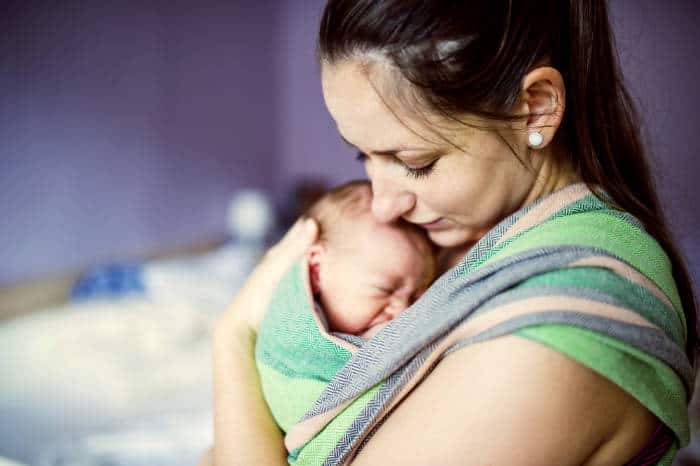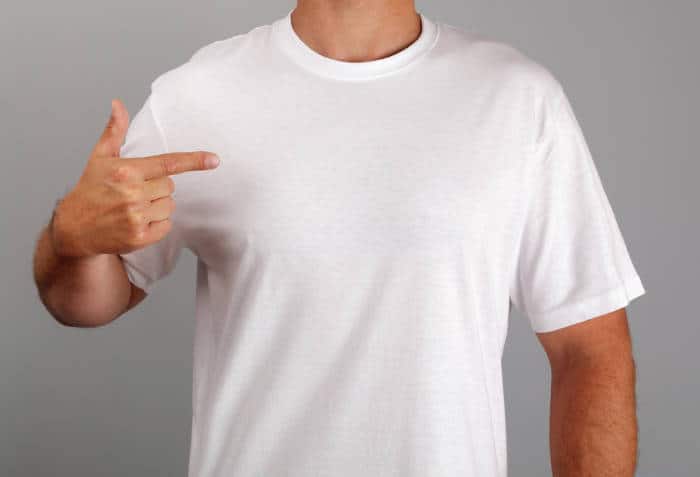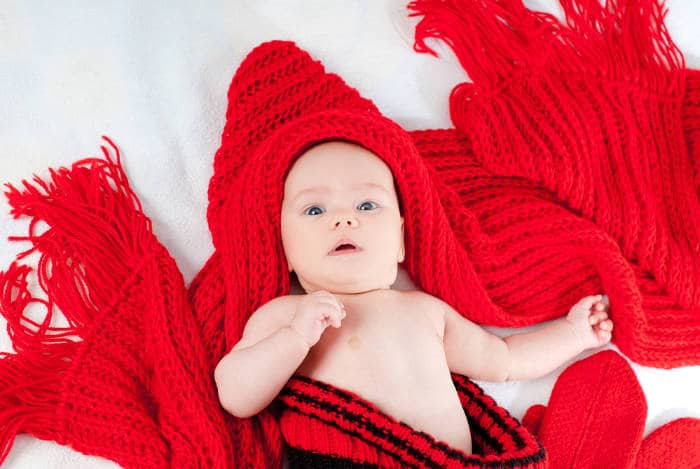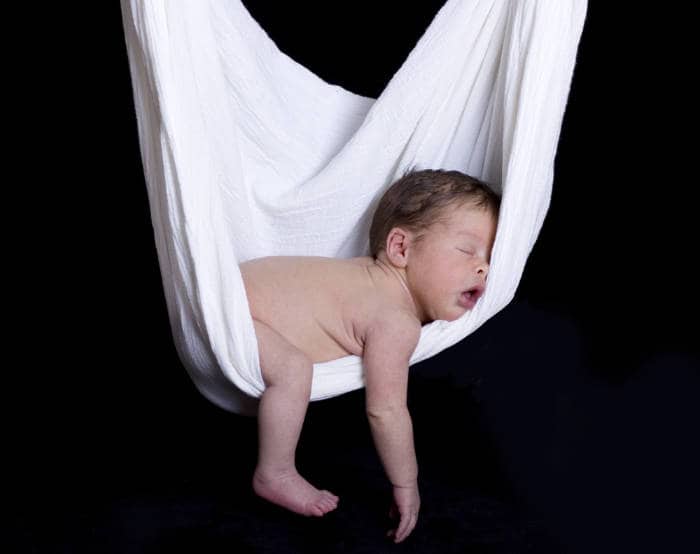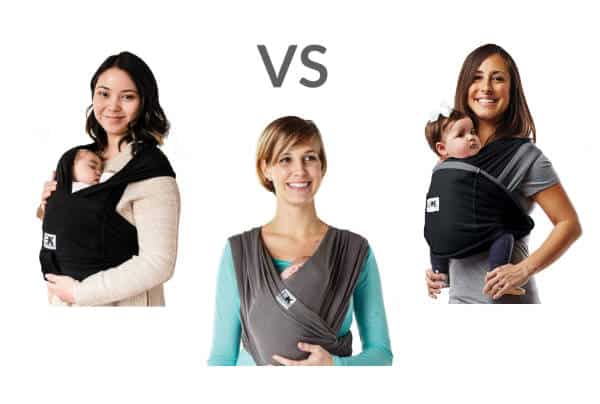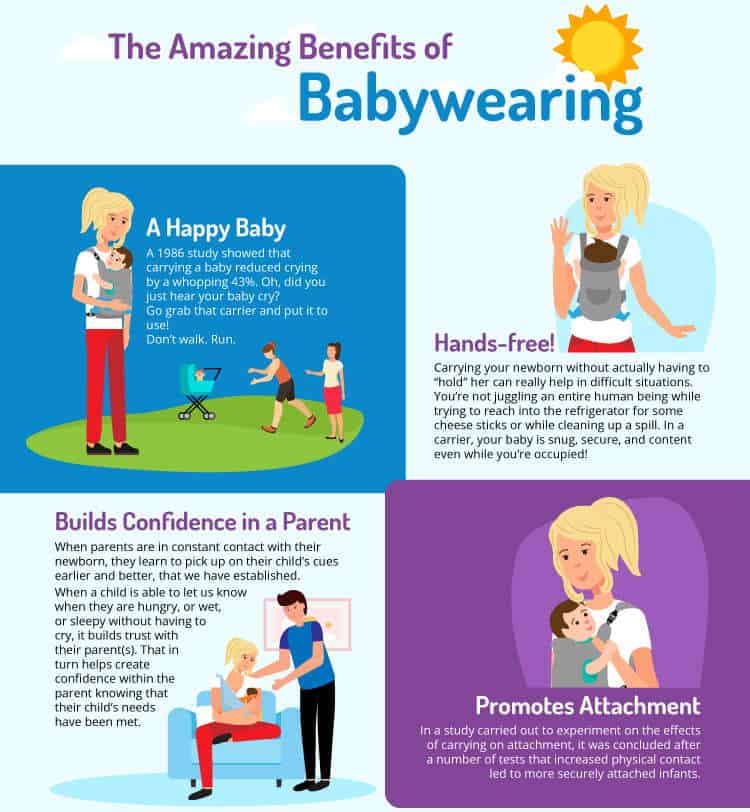What can be better than the soft feel of your baby, up close – the newborn baby smell, or the satisfied snuggle of a toddler. How about the freedom of movement, getting things done? Or soothing a fussy child? Helping your curious little one to explore the world alongside you?
Babywearing is a great way to accomplish all these things – see the world, bond, get stuff done – all from the comfort of mama’s belly or back.
Here’s your guide to the different types of things to look for in a baby carrier for a happy plus-size moms and happy child.
The best plus size baby carriers
- Baby Tula Free-to-Grow Baby Carrier – Generous waistband sizing (upto 57″)
- Ergobaby 360 Cool Air – Good waistband (52″) and shoulder straps adjust well
- Infantino Flip 4-in-1 Carrier – Comes with a wasitband extender
- Keababy Wrap Carrier – Designed with post-partum bodies in mind, one size can be tied to fit all
- Baby K’tan Original – A classic multi-purpose wrap for up-to dress size 24
- Advanced Life Plus Size – An affordable 15.5ft wrap designed specifically for plus size mamas
Soft Structured Plus Size Carriers
Plus Size Wraps
Note: Our individual reviews are below, but you can also click any of the links above to check current prices on Amazon and other retailers
Table of Contents
What’s out there? – Different carry positions and carrier types
To keep your baby or toddler close to your body, there are a few positions to use. Some are recommended based on age, or certain development milestones, like when your baby is strong enough to hold his or her head up. Other positions are a preference after your child has reached a development point where carrying style is a question of comfort for you and him or her.
The starting point is front, facing in. In this position, your baby is snug up to your chest, facing you, nice and close, where you can smell baby’s head and respond to every sniffle or smile. After your infant grows a bit, and once the neck muscles have strengthened, mama and baby can graduate to front, facing out position, where the baby can be turned around to see the world from your perspective. (A good carrier will be adaptable to provide for both positions.) Something to mind in both these early in- and out-stages is the hip placement of baby in the carrier—ensuring your child has proper hip support and alignment.
Coming past the half-year mark, as your child leaps through more mobility milestones, the side (hip) and back options will be more viable. And, as baby grows into a toddler, the side and back options become the most comfortable for mama.
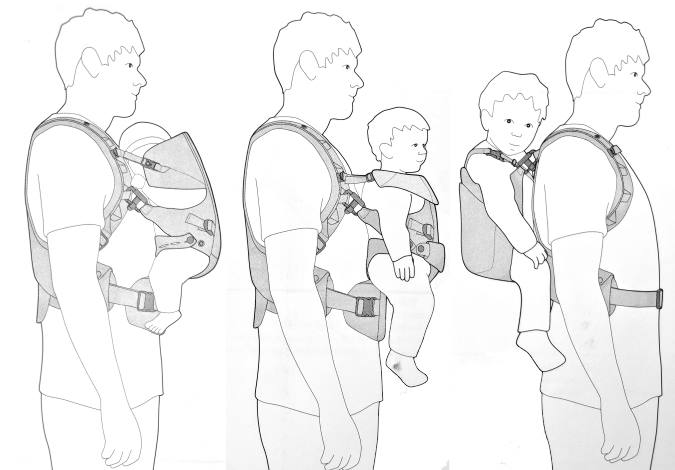
There are a spectrum of carrier styles to facilitate each of these positions.
Soft–structured: This carrier is exactly what it sounds like, a soft, baby-friendly carrier that has shape for your baby, often with adjustable fittings to grow as your baby grows. This carrier usually has more straps around the waist, arms, or back for mama to think about, but it also usually has more padding, support, and versatility. The soft-structured baby carriers often offer the longest range of use, from newborn up to toddler, and the most carrier options, covering front, facing in and out, to side (hip), and back.
The wrap: A wrap carrier is unstructured, and can be tied into a variety of styles for mama and baby wearing. It can also double as a nursing or spit-up cloth on the go as needed. The wrap is a pleasant and soft way to swaddle up baby close to mama, but it can offer less support, which can be trickier as baby gets older, heavier, and more wiggly. The wrap carrier can be easily folded up and packed away, and it doesn’t have any straps or buckles to worry about.
Mei dai: The Mei dai carrier option is best known as a back carrier, though it can also be used for front carrying with a few modifications. Use with a newborn can require more practice and instruction to create the proper position for good support, but it is a great, comfortable fit for walking with an older baby or toddler.
Sling/ring: A ring sling baby carrier is a slightly modified version of the wrap (see our sling reviews). While the wrap is a single piece of fabric, usually somewhat elastic, that is tied up to create a carrier, the ring/sling is a piece of fabric—ranging from raw silk to fresh cotton or texture muslin—that usually has a small mechanism (like a ring) to create the baby-holding structure. The ring/sling option can prove more difficult to create the right supportive structure for a newborn, but it is excellent for hip- or back-holding with a toddler. Like the wrap, the ring/sling can be conveniently folded up and stowed away or turned into a scarf or blanket on the go.
With all baby carriers, things to think about when selecting a carrier (or two) are the health and safety of your baby, and also the comfort and ease to you, the mother, in putting on the carrier, ease of access to baby, and versatility when walking about.
Tailored to you: What to look for in a plus size carrier
Post-birth mama bodies should be as comfortable as possible, for all sizes. Plus-sized mommies have a few things they should look for when spotting the best plus size baby carrier options.
Strap Adjustability
The design for soft-structured and some mei dai carriers will include straps, some around the waist, some around the back or arms. The padded shoulder straps should be extendable; some brands also offer extensions or special sizing, so be on the lookout for that. Adjustable straps should have good support and not be secure. No one wants a tight strap or a flimsy one!
Buckles should be padded or in a comfortable part of the body. You also want to make sure the straps, and any extensions on the buckle carrier, are in an easy-to reach place: no fumbling around to open and close buckles. Check whether straps can be adjusted while you are wearing the carrier or whether you have to remove the carrier to adjust straps first.
The last thing you want is frantic tight pinch moment while your little one is fast asleep!
Waistband Sizing
The waistband in a carrier is important for anyone using it, especially plus-sized mamas. This is relevant primarily for soft-structured and some mei dai carriers, but it can also apply to semi-wrap carriers as well.
First, make sure the waist fits. Then, look at support, padding, and, as above, buckles and securing mechanisms. Does the material around the waist breath well? Will it cause abrasion to your waist or made you feel over sweaty and itchy? Look for soft, breathable fabrics or a synthetic mesh combination.
Also look for good waist support. This can be especially important for C-section postpartum moms who might feel they need more support in the lower abdomen. There are carriers specially tailored to give women more abdominal and back support through the structure of the carrier.
Like strap adjustability, look for extensions and add-ons to carriers for plus-sized moms, or carriers specially designed for plus-sized moms. Another thing to consider is what you plan to use the carrier for, and how long: a carrier for a long hike with a toddler will need significantly more cooling, back support, and comfortable padding than a throw-on carrier to hold an infant while you finish a few quick chores.
Your needs matter, and so does the situation, to find the right fit. So both you and your little one are happy and comfortable.
Comfort & Padding
Your comfort, like your baby’s, is paramount. So when looking for a carrier of any sort, it’s important to think about how it’ll wear around the body. You want to make sure it goes on and off easily, without much fuss. (It can also help to try putting it on and taking it off a few times without baby, to get the hang of it.)
You’ll be using the carrier with a child in all sorts of moods – calm and compliant to complaining or sleeping or unwilling – so consider the complexity of the structure, snaps, and setup. Can you reach all the snaps? Can you make sure your baby is fastened in tightly? Can you move properly? Also keep in mind, again, that you could be bearing this for long stretches of time, on walks around the neighborhood, running errands, or just doing chores around the house.
Padding in weight-bearing areas, like the hips, waist, shoulders, arms, or neck, are things to look for. But also make sure the padding is breathable and won’t be too heavy after a while. It’s also worth checking how machine-wash-friendly the material is, and whether the padding can be removed.
Padding is less relevant for wrap and sling/ring baby carriers, but comfort no less important. Think about the stretchiness of the fabric and where the material will rest on your body, and whether it’ll offer the support you need to carry your little one around.
What to look for in any good carrier
With any carrier, there are a few things you, as a mama, want to be on the lookout for. This ranges from the essential, like safety and comfort of your baby, to preference for materials, and then considering the specifications of the little one you’re buying for.
First, Consider Safety
At the top of the list is safety for your child and for you. When buying a carrier, check to make sure it is the appropriate structure and has the right support system for your little one. Especially in the early months, head and neck support, and hip support are key points.
Because most babies spend their time in the womb in fetal position, and all babies are born more flexible and with softer joint tissue, the wrong type of carrier can cause problems and stifle proper development of baby’s muscular and joint structure. Hip dysplasia – an abnormality in the hip joint when the socket and ball are not properly aligned, leading to an increased risk of dislocation – has been linked to carriers lacking proper support or that are too restrictive.
The international Hip Dysplasia Institute recommends carriers with a wide hip placement so the thigh is supported all the way to the knee joint. Similarly, lack of proper neck support can over strain a newborn’s delicate neck muscles. Chin support and placement is another thing to look for—whether the carrier band falls above or below an infant’s chin to make sure the baby can rest and breath properly or is tucked in.
Also, a newborn baby’s spine should be nicely C-shaped to allow proper development. These are things to watch for diligently, but they can be overcome with a smart, well-made carrier and a well-informed mama! Another thing to think about is heat. Babies (and toddlers, too) can have sensitive skin and be prone to heat rashes or discomfort. Some carriers tailored to newborns, most commonly the soft-structured option, often offer a small canopy to block the sun. But, as explored below, another way to take care of comfort, heat, and abrasion is to make sure you have the right materials.
Materials and Breathability
There are so many materials out there, so luckily you have quite a range of choices. Synthetic fabrics will be easy to clean but might be a bit scratchy or warm on you and little one, which could be uncomfortable in the hotter summer months. Breathable carrier fabric is ideal, especially a cotton or muslin weave; as a bonus, it also washes quite easily.
Silk—raw or refined—is a popular choice for wrap and ring/sling options, which is lovely and hand-washable. Consider color, too: depending how frequently you use the carrier, you and your little one will be seeing a lot of it. Do you want a color that pops? Or something softer and more subtle?
White might look shiny and fresh but then be stained easily. Black might be too warm in higher heat. But light blues, greens, and greys could be a softer palette for your and baby or toddler to enjoy. And, of course, as baby grows, so preferences and options do. A lot of newborn carriers are focused on hypoallergenic fabrics and soft colors, but carriers tailored to toddlers are brighter and more varied.
Child Size and Weight Range
Carrier should be tailored to baby, and it should adapt with baby, too, whether that means investing in a particularly versatile option or buying a second or third carrier type as baby grows. Many mamas enjoy having a range of options on offer, depending on the day, baby’s disposition, and the task.
Most carriers will list age (in months) and weight recommendations, limits, or requirements. The weight limit is an important indicator. For you and baby, it’s better not to stretch a carrier past its max; it’ll be uncomfortable for you both. Similarly, make sure baby is at a good weight or development stage before graduating to a carrier that could be too big or lack the proper support, as mentioned in the safety section.
Luckily, carriers are straightforward about their weight and age suggestions, usually listing them in the description or on the packaging. But you, as a mama, can judge, too. Take note of whether the carrier feels too strenuous, lacks the proper support, or just seems to big or small for your child.
Plus Size Carrier Reviews
Baby Tula Free-to-Grow Baby Carrier
The Baby Tula carrier is a comfortable, dynamic carrier with lots of padding and carry options. The carrier is food for newborns at 7 pounds up to toddlers weighing 45 pounds—a nice range! It is for a mama looking to spend a little more on a carrier, but with the reward of having a piece that should last for some time.
Wasitband sizing: 27″ to 57″
What we liked:
- It is ergonomic for baby’s optimal hip, spine, and neck support
- Made from cotton and easy to wash
- The adjustability and padded waistband is comfortable for parents
- Offers variety of back and front carry options for a range of years
- Comes in some fun patterns!
What we didn’t:
- The carrier has a slightly heavier base weight
- Can be more challenge to first learn the on and off
Ergobaby Carrier 360
The Ergobaby is an established carrier brand, and for good reason. This carrier is adaptable for all positions—front, out, hip, and back—and offers good support for mama and baby. It’s adjustable for wearers of different sizes, and offers good lumbar support and padding to evenly distribute your baby’s weight. It also has a nice, breathable mesh fabric. Good for infants from 12.13–33.1 pounds. On the higher end of the price spectrum, it offers a long-lasting option.
Waistband sizing: 26″ – 52″
Shoulder straps sizing: 28 3/4″ to 46 3/4″
What we liked:
- Includes hood for protection from the sun
- Good support and comfort around the waist and in shoulder straps for mama
- Ergonomic position for baby
- Adaptable positions
What we didn’t:
- Weight not as versatile for infants—might need an infant insert
- Synthetic fabric might be less comfortable for some
- Slightly heavier base weight
Infantino Flip 4-in-1 Convertible Carrier
The Infantino is a popular choice with a winning price point. It is suitable for infants from 8–32 pounds. The structure is adjustable, boasting four ways to carry a baby, from newborn to toddler, as shown in the video below. It comes in a subtle, soothing grey color.
Wasitband sizing: 24-47 inches / 60 – 120 cm
What we liked:
- It’s adjustable to the size, height, and weight of the person carrying the child
- The carrier includes a comfortable strap extension for plus-size mamas
- It is machine washable
- Baby is held up tight to mama, kissably close and comfortable
- The carrier is lightweight, under 2 pounds
- Great price point
What we didn’t:
- Fabric is synthetic, which could be a bit stretchy or uncomfortable
Keababy All-in-1 Stretchy Baby Wraps
The Keababy baby wrap carrier is a versatile and comfortable piece made with post-partum mama bodies in mind. It comes with an instruction manual detailing different carrying options. It has a good price point, and durability. The carrier is suitable for children 2–35 pounds. This sling is a good way to keep your baby close to your skin and calmed by mama.
Whilst this is a one size fits ‘all’ wrap, that’s not strictly true, plus size wearers will have less fabric to tie, but that just means you have to tie behind your back instead of out front. Plus size parents can also easily fold this baby carrier and put inside the diaper bag.
What we liked:
- Designed with good abdomen support in mind
- Cotton-spandex design is breathable but slightly stretchy
- Light base weight for carrier
- Can double as a breastfeeding cover
What we didn’t:
- Could be a harder fit for plus-sized moms
- Less adaptable as baby grows older
- Could be trickier to first master carrying wrap methods
Baby K’tan Original
The baby wrap carrier by K’tan is another classic multi-purpose carrier. It covers the spectrum of sling, wrap, and carrier, suitable from a newborn of 8 pounds up to a toddler of 35 pounds. This carrier also gets a signoff from the International Hip Dysplasia Institution on its “hip-healthy” ergonomic positioning for infants. The carrier comes with an instruction manual on multiple carrying positions and methods.
The K’tan XL is designed for US dress sizes from 22-24 (EU 52-54).
What we liked:
- Good for nursing, and can double as a nursing cover
- Lightweight base weight
- Good head support for baby, along with hip and spine placement
- Easy to clean and made from organic cotton
What we didn’t:
- Some might find less support and padding than desired
- It can take longer to master wrap techniques
Advanced Life Plus Size Carrier
This 15 /12 ft wrap carrier for plus-sized moms is made with a post-pregnancy comfort in mind. The carrier is designed to give a little extra room to plus-sized moms or those moms who put on a little extra baby weight over the last nine months and need the support while carrying baby.
A good price point, the design is made to keep baby close to mom, and to keep plus-sized moms comfortable.
What we liked:
- Organic cotton and lyrca blend is breathable and hypoallergenic while offering stretch and flexibility of size
- Can double as a nursing cover
- Light base weight
- Comes with instruction manual on how to wear
What we didn’t:
- Less versatility as baby grows bigger
- Fewer back and arm support and padding options than some might prefer







